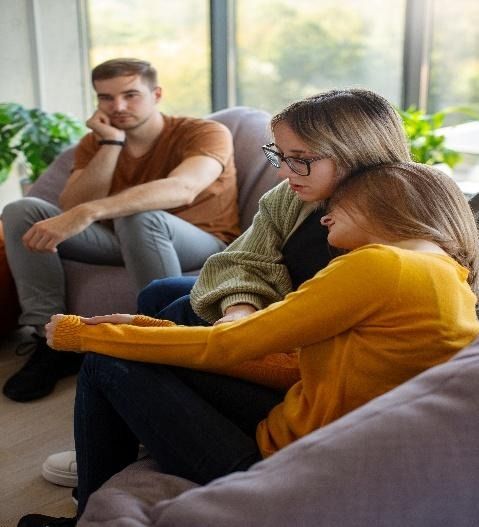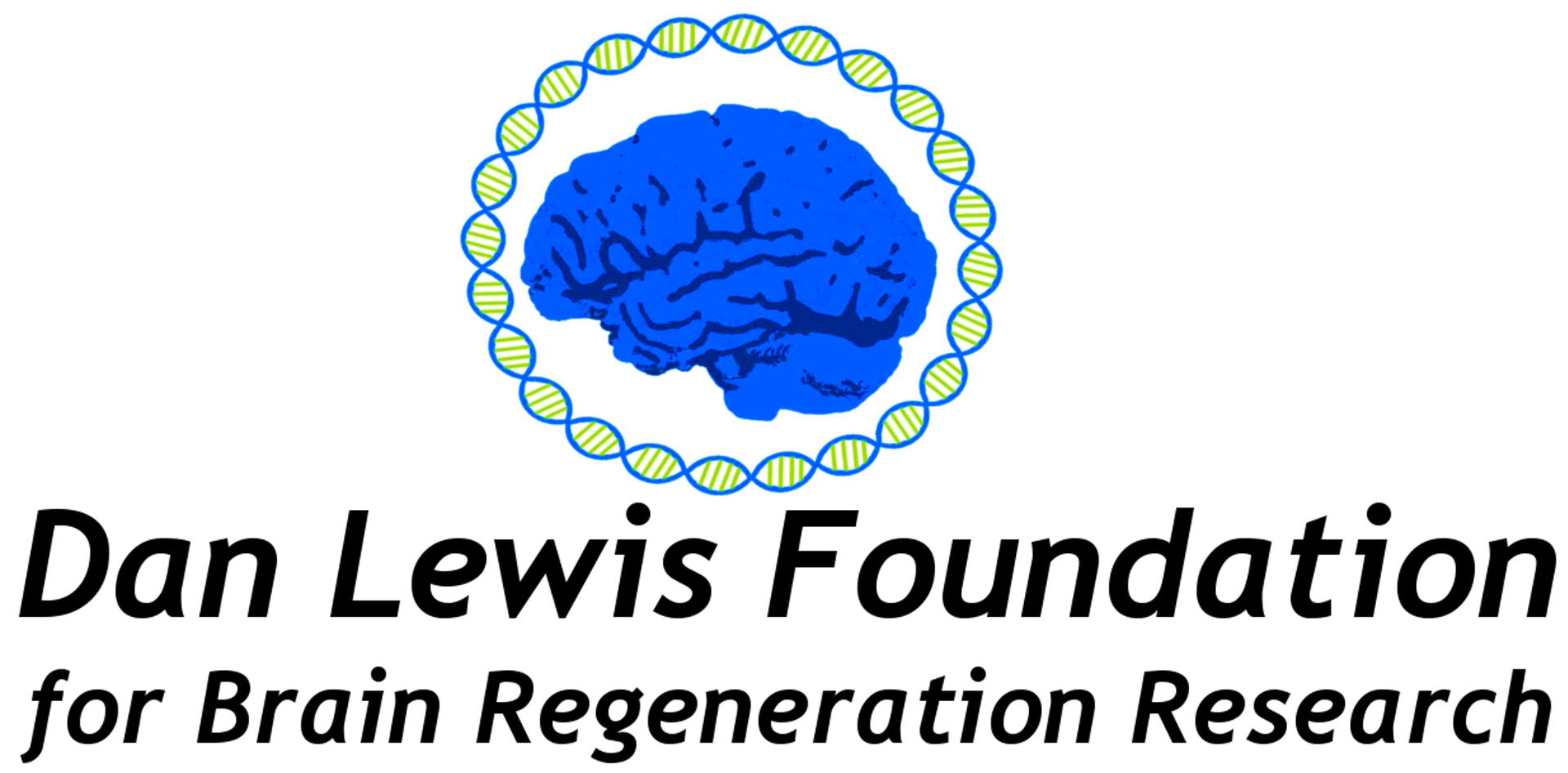Towards Brain Regeneration and Functional Recovery
A significant brain injury can result in the loss of brain tissue, disruption of nervous system connections, destruction of brain regions controlling various functions, and chaotic biochemical and electrical activity. To minimize the initial injury’s impact, it is important to control bleeding and swelling, limit ongoing damage and scarring, and limit harmful cascading metabolic processes. Human brain tissue does not regenerate, but some functional recovery can occur as surviving brain regions retrain to take over lost functions. Survivors of severe brain injury often experience only modest improvement over time.
Recent research has indicated that developing biomolecular medicines that can stimulate brain regeneration and functional recovery is plausible, even years after the injury. The DLF is dedicated to supporting the creation of biomedical therapies for brain regeneration for persons with severe brain damage. Their strategies include repletion of neurons, enhancement of synaptic connections, reconnection of severed axons, targeted training of brain regions, and innovative use of brain-computer interfaces.
The DLF newsletter has and will continue to showcase cutting-edge research to inspire support for this important work. The DLF relies on charitable contributions and grants to fund research. Every donation, whether large or small, helps to make our vision of meaningful brain regeneration and improved functional outcomes closer to reality.
To learn more: https://www.danlewisfoundation.org/towards-brain-regeneration-and-functional-recovery
The Synapse and Brain Regeneration
The brain largely consists of interconnected neurons carrying electrical currents. These currents are transmitted by neurotransmitters at a microscopically small gap (the synapse) between neurons. Neurotransmitters carry the signal across the synapse, thus allowing the signal to pass from one neuron to the next. The brain relies on trillions of these synaptic connections, which form established pathways but also allow the brain to alter itself in response to stimulation to adapt to new experiences.
Recent breakthroughs in research have significantly advanced our understanding of synaptic formation, neurotransmitter roles, and the effects of drugs on cross-synaptic communication. After severe brain injury, the formation of new synaptic connections is crucial for functional recovery. Studies have shown that stimulating the connection between neurons is a highly promising strategy for brain regeneration. Another innovative approach involves replacing lost neurons by stimulating new growth or transplanting cells. Providing a rich environment that supports synaptic connections through retraining helps promote neuroplasticity.
To learn more: https://www.danlewisfoundation.org/the-synapse-and-brain-regeneration
Can Damaged Brain Tissue Be Replaced?
Brain regeneration research, a novel and cutting-edge area, is dedicated to the regrowth or regeneration of brain tissue. Recent advances involve creating induced pluripotent stem cells (iPSCs) from skin cells, which can form any mature tissue, including nerve tissue. Researchers hope to restore lost brain functions by reintroducing these stem cells into damaged brains. For instance, iPSCs can generate dopamine-producing neurons to replace those lost in Parkinson’s disease. Studies in monkeys show that transplanted iPSC-derived neurons can survive, integrate, and improve motor function, with promising results in human clinical trials. Despite progress, many scientific, technical, and ethical challenges remain. However, cultivating induced pluripotent stem cells from an individual’s own existing cells offers significant hope for meaningful regeneration of the injured brain and better recovery.
To learn more: https://www.danlewisfoundation.org/can-damaged-brain-tissue-be-replaced
Targeting the Genome to Promote Brain Regeneration
The entire set of DNA instructions in a cell (the genome) directs the brain’s development, growth, and maturation. DNA, containing the genetic code unique to each individual, is encoded into a similar molecule called RNA. The RNA then carries genetic information that is translated into various proteins necessary for neuronal proliferation and health
Researchers are exploring several methods to stimulate brain regeneration at the genetic level:
- Gene Therapy: This method introduces new genetic material into adult cells using an engineered “de-activated” virus to carry DNA to target cells to promote neuronal repletion. This method has shown promise in terms of the production of proteins necessary to protect existing neurons or to regenerate neurons in neurodegenerative diseases.
- Gene Editing: Techniques like CRISPR-Cas9 enable precise genomic corrections. Successful trials for genetic blindness offer hope for similar applications in brain regeneration.
- Antisense Oligonucleotides (ASOs): These are small synthetic chains of amino acids that bind to RNA molecules to modulate gene activity. ASOs can inhibit the production of proteins harmful to neurological development or promote the production of beneficial proteins, showing great promise in diseases like spinal muscular atrophy, Huntington’s disease, and ALS.
To learn more:https://www.danlewisfoundation.org/targeting-the-genome-to-promote-brain-regeneration
Unlocking the Regenerative Powers of Antisense Oligonucleotides for Brain Injury Recovery
The brain’s inherent limitations in regeneration pose significant challenges in the recovery from brain injuries and neurological disorders like Alzheimer’s and Parkinson’s. Recent strides in molecular biology and genetics, particularly with antisense oligonucleotides (ASOs), hold immense promise for novel and effective treatments.
ASOs interact with RNA to block gene expression, potentially enhancing regeneration by:
- Promoting neurogenesis by targeting genes that regulate neuron formation.
- Reducing inflammation by silencing inflammatory process genes.
- Enhancing axon (portion of the nerve cell that sends signals at the synapse) regrowth to re-establish functional connections.
Challenges for ASO therapies include ensuring specificity to avoid off-target effects and ensuring effective delivery across the blood-brain barrier. Nevertheless, ASOs represent a very exciting path towards brain regeneration.
To learn more: https://www.danlewisfoundation.org/unlocking-the-regenerative-powers-of-antisense-oligonucleotides-for-brain-injury-recovery
Brain Regeneration via Brain Tissue Transplantation: A Glimpse into the Future of Medicine
Replacing a severely damaged liver with a healthy portion is possible; replacing brain tissue is far more challenging. The first major hurdle in brain tissue transplantation is sourcing replacement brain tissue. With recent breakthroughs, scientists are now able to transform readily available blood or skin cells into pluripotent stem cells (iPSCs) and reprogram them into neurons. When cultured, these neurons can mimic intact brain neurons and are not rejected as foreign tissue when transplanted back into the individual.
A decade ago, scientists successfully grew derived neurons into organoids -- small ‘mini-brains’ with many features of a living brain. Despite limited survival in cell cultures, these organoids demonstrated that derived neurons possess all the necessary information to create a partially functional brain in the laboratory setting. With their ability to develop new neural connections, organoids hold immense potential in compensating for damaged brain tissue and promoting recovery. However, their application in humans necessitates the creation of suitable transplantation sites, developing surgical techniques, and optimizing tissue integration without disrupting brain activity.
To learn more: https://www.danlewisfoundation.org/brain-regeneration-via-brain-tissue-transplantation
Brain-Computer Interfaces to Augment Brain Regeneration
A Brain-Computer Interface (BCI) enables direct communication between the brain and external devices, allowing control through thought. BCIs facilitate actions like typing, playing music, controlling prosthetics, or steering wheelchairs by thinking. They can also reconnect brain regions to the body or external world after neuronal connections are lost, providing sensory input or motor output.
How Do BCIs Work?
BCIs are not just about decoding and encoding the brain’s electrical signals. They are a complex interplay of technology and biology. BCIs use sensors placed on the scalp (non-invasive) or within the brain (invasive) to detect these signals. Sophisticated algorithms are the key to making BCIs work. These algorithms interpret the signals, enabling control of prosthetic limbs, cursors, or other devices and transmitting sensory information directly to the brain.
BCIs hold immense potential to transform the lives of individuals with severe brain injuries. They can empower paralyzed individuals to regain control over their limbs, expedite brain reprogramming, and enable the use of external devices.
Biologic Augmentation of BCI Benefits
New medicines that stimulate neuron formation, repair damaged axons, and enhance synaptic connections have the potential to amplify the benefits of brain-computer interfaces. These treatments might aid BCI recipients by preconditioning the brain or replacing lost tissue. However, challenges remain, including ethical considerations, technological limitations, and the need for personalized rehabilitation. Despite these hurdles, BCI technology shows promising potential for restoring abilities to those with severe brain injuries.
To learn more: https://www.danlewisfoundation.org/brain-computer-interfaces-to-augment-brain-regeneration


